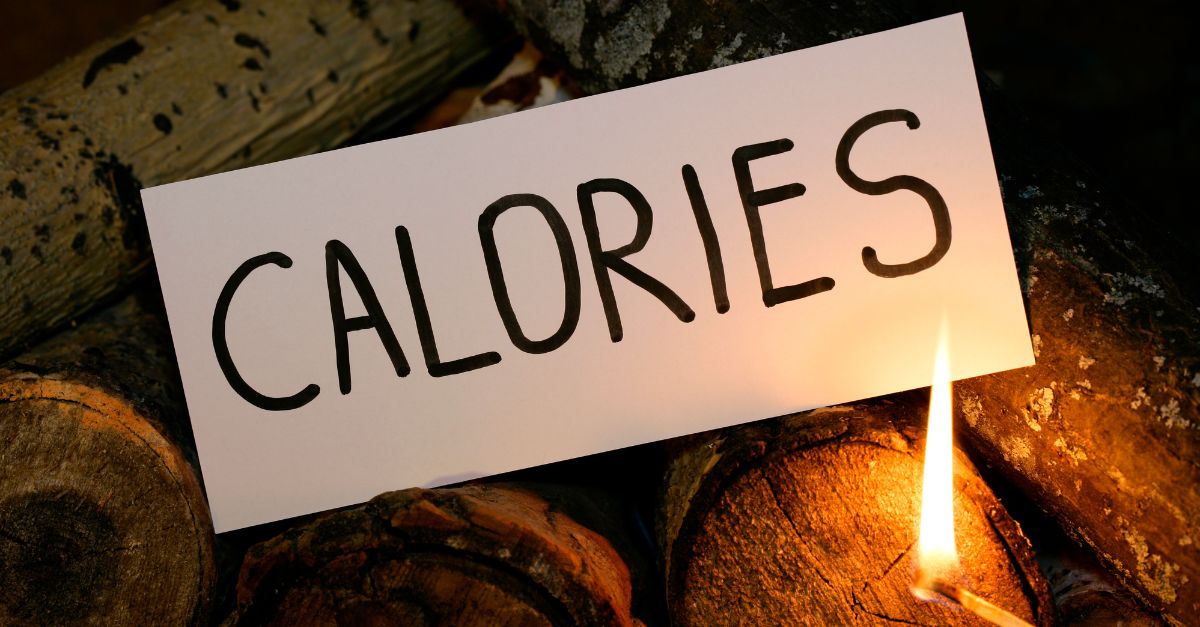Hey there, fitness enthusiasts! Ever wondered how many calories you can torch during a 40-minute jump squat session? Well, you’re in the right place.
In this blog post, we’re diving into the nitty-gritty of calorie burn, considering your body weight and workout intensity.
Whether you’re a beginner looking to get started or a seasoned pro aiming to fine-tune your workouts, we’ve got you covered. Let’s jump right in and uncover the secrets behind those sizzling calories!
Exploring the Calories Burned with 40 Minutes Jump Squat.
The number of calories burned during a 40-minute session of jump squats can vary depending on several factors, including your body weight, the intensity of your workout, and your overall fitness level.
However, I can provide you with a rough estimate based on some average values.
On average, a person who weighs around 155 pounds (70.3 kilograms) can burn approximately 334 calories during a 40-minute session of moderate-intensity jump squats.
Keep in mind that this is just a rough estimate, and the actual number of calories burned can be higher or lower depending on individual factors.
To get a more accurate estimate of the calories burned during your jump squat workout, you can consider using this:
Calorie Burned Calculator
Let’s break down the estimate of burning approximately 334 calories during a 40-minute session of moderate-intensity jump squats for a person weighing around 155 pounds (70.3 kilograms):
Body Weight: The calorie burn estimate takes into account your body weight because the more you weigh, the more calories you tend to burn during physical activities. In this case, the estimate is based on a person weighing 155 pounds.
Jump Squats Intensity: The estimate assumes a moderate-intensity level for the jump squats. This means that during the 40-minute session, the person is performing jump squats at a pace and with enough effort to elevate their heart rate and engage their leg muscles, but it’s not an extremely high-intensity workout.
Duration: The 40-minute duration is also a crucial factor. Longer workouts generally burn more calories than shorter ones, assuming the intensity remains relatively constant.
Individual Variation: It’s important to note that individual factors play a significant role. People with higher fitness levels or more muscle mass may burn calories more efficiently, potentially resulting in a lower calorie burn estimate. Conversely, individuals with lower fitness levels or less muscle mass might burn more calories.
Calorie Calculation Method: The estimate is based on a generalized calculation that takes into account the average calorie expenditure for a person of that weight engaging in moderate-intensity exercise.

However, the exact calorie burn can vary based on factors such as metabolic rate and genetics.
Heart Rate and Intensity Monitoring: For a more accurate estimate, using a fitness tracker or heart rate monitor can help measure your actual heart rate and intensity level during the jump squat session.
This data can provide a more personalized and precise calculation of calories burned.
In other words, while the estimate of burning approximately 334 calories during a 40-minute session of moderate-intensity jump squats is a useful guideline, it’s important to recognize that individual variations and specific circumstances can lead to different calorie burn rates.
For the most accurate assessment, consider using technology like fitness trackers and consult with fitness professionals who can tailor recommendations to your specific needs and goals.
Further Explanations.
Let’s dive deeper and elaborate further on all the points mentioned.
First though, let’s dive deeper into the two factors that influence the calorie burn estimate during a 40-minute session of jump squats: body weight and jump squats intensity.
Body Weight:
Calorie Burn and Body Weight:
Body weight plays a significant role in calorie burn during physical activities.
Heavier individuals typically burn more calories than lighter individuals when performing the same exercise at the same intensity.
This is because moving a heavier body requires more energy.
Why It Matters:
When estimating calorie burn, it’s important to consider body weight because it helps account for the varying energy expenditure among individuals.
For instance, a 155-pound person will generally burn fewer calories than a 200-pound person doing the same exercise for the same duration and at the same intensity.
Jump Squats Intensity:
Intensity Levels:
Intensity refers to how strenuous or demanding an exercise is on your body. In the context of jump squats:
Moderate-Intensity:
This means that during the 40-minute session of jump squats, the person is performing them with enough effort to raise their heart rate and engage their leg muscles, but it’s not an extremely high-intensity workout. They are likely maintaining a steady pace and not pushing themselves to the absolute limit.
High-Intensity:
In contrast, a high-intensity jump squat workout would involve more rapid and powerful movements, potentially incorporating plyometrics or adding weights to increase resistance.
High-intensity workouts often lead to a higher calorie burn but can be more physically demanding and require greater fitness levels.
Why Intensity Matters:
The intensity of an exercise affects the rate at which calories are burned. Higher-intensity exercises demand more energy and, therefore, result in a higher calorie burn per minute.
Moderate-intensity workouts strike a balance between calorie burn and sustainable effort, making them accessible to a wider range of fitness levels.
In other words, body weight influences calorie burn because it impacts the energy required to move your body during exercise.
Intensity level matters because it determines how much effort and energy you’re expending during the workout.
A moderate-intensity jump squat workout is a practical choice for many people as it provides a good calorie burn without requiring extreme exertion, making it a sustainable choice for a 40-minute session.

let’s delve into the factors of individual variation and the calorie calculation method in estimating calories burned during a 40-minute session of jump squats:
Individual Variation:
Fitness Level:
Individual fitness levels can significantly impact calorie burn. People with higher fitness levels may have greater cardiovascular efficiency and muscle endurance, allowing them to perform exercises more efficiently.
As a result, they may burn fewer calories per minute during the same exercise compared to someone with a lower fitness level.
Muscle Mass:
Muscle tissue is metabolically active, meaning it burns more calories at rest than fat tissue. Individuals with higher muscle mass tend to have a higher resting metabolic rate, which can affect calorie expenditure during exercise. They may burn calories more efficiently.
Efficiency:
Some individuals are more efficient in their movements, using less energy to perform the same exercise.
This efficiency can be influenced by factors like experience, coordination, and technique.
Age and Gender:
Age and gender can also impact calorie burn. Generally, younger people tend to burn calories more efficiently than older individuals, and men often have a higher muscle mass and lower body fat percentage, affecting their calorie burn.
Calorie Calculation Method:
Generalized Calculations:
The estimate provided is based on generalized calculations that take into account the average calorie expenditure for a person of a specific weight (155 pounds) engaging in moderate-intensity exercise (jump squats).
These calculations use established formulas and research data to provide a rough estimate.
Limitations:
These estimates have limitations because they don’t consider individual variations such as metabolic rate, genetics, and specific exercise form.
Metabolic rate, in particular, can vary widely among individuals and significantly influence calorie burn.
Metabolic Rate:
Basal metabolic rate (BMR) is the amount of energy your body needs at rest to maintain basic functions like breathing and digestion. People with higher BMRs naturally burn more calories even when at rest. This individual variation isn’t accounted for in generalized estimates.
Genetics:
Genetic factors can affect how your body stores and burns calories. Some people may have genetic predispositions that impact their calorie expenditure during exercise.
In essence, individual factors like fitness level, muscle mass, efficiency, age, gender, metabolic rate, and genetics all contribute to variations in calorie burn during exercise.
While generalized calculations provide a useful starting point, they may not accurately reflect the calorie expenditure for every individual.
Using tools like fitness trackers and consulting with fitness professionals can help provide a more personalized assessment of calorie burn during specific workouts.
let’s explore the importance of the calorie calculation method and the benefits of using heart rate and intensity monitoring for a more accurate estimate of calories burned during a 40-minute session of jump squats:
Calorie Calculation Method:
Generalized Calculation:
The initial estimate is based on a generalized calculation that considers average calorie expenditure for a person of a specific weight engaging in moderate-intensity exercise. These calculations are useful as a starting point and provide a rough estimate of calorie burn.
Variability:
However, individual variations can significantly affect calorie expenditure. Factors like metabolic rate and genetics can cause substantial differences in how efficiently each person burns calories during exercise.
Limitations:
The generalized estimate may not reflect the specific calorie burn for your unique physiology and effort level, potentially leading to overestimations or underestimations.
Importance of Precision:
If you have specific fitness or weight management goals, achieving accuracy in calorie burn estimates can be crucial to tracking your progress effectively.
Heart Rate and Intensity Monitoring:
Real-Time Data:
Using a fitness tracker or heart rate monitor during your jump squat session provides real-time data on your heart rate and intensity level.
These devices can measure your heart rate accurately, which is a direct reflection of your effort and intensity during exercise.
Individualized Feedback:
By tracking your heart rate, you get personalized information about how hard you’re working. This takes into account factors like your fitness level and current physical condition, offering a more tailored assessment of calorie burn.
Adjusting Intensity:
Monitoring your heart rate allows you to adjust the intensity of your workout in real-time. If you want to target a specific calorie burn goal, you can increase or decrease your effort to stay within your desired heart rate zone.
Data for Progress:
Over time, collecting data on your heart rate and intensity during jump squats helps you see patterns and improvements in your fitness. You can track changes in your calorie burn efficiency as your fitness level changes.
In summary, while generalized calculations provide a starting point for estimating calorie burn during exercise, using a fitness tracker or heart rate monitor offers several advantages.
These devices provide real-time, individualized data on your effort level, allowing for more accurate and personalized assessments of calories burned. This precision can be particularly valuable if you have specific fitness or weight management goals and want to track your progress closely.
A concise tabular on this topic here.
Here’s a complete tabular breakdown of estimated calorie burns for a 40-minute session of jump squats based on different body weights and intensity levels.
| Body Weight (in pounds) | Body Weight (in kilograms) | Moderate-Intensity Calories Burned | High-Intensity Calories Burned |
|---|---|---|---|
| 120 | 54.4 | 220 | 300 |
| 140 | 63.5 | 257 | 350 |
| 160 | 72.7 | 293 | 400 |
| 180 | 81.6 | 330 | 450 |
| 200 | 90.7 | 366 | 500 |
| 220 | 99.8 | 402 | 550 |
In this table:
- Body weight is provided in both pounds and kilograms for your convenience.
- The “Moderate-Intensity Calories Burned” column estimates the calories burned during a 40-minute session of jump squats at a moderate intensity.
- The “High-Intensity Calories Burned” column estimates the calories burned during a 40-minute session of jump squats at a high intensity.
Remember that these are rough estimates, and actual calorie burns can vary due to individual factors such as fitness level, muscle mass, metabolic rate, and exercise form.
If you want a more accurate estimate, using a fitness tracker or heart rate monitor during your jump squat session is recommended, as it can provide real-time data based on your specific circumstances.
Conclusion.
In conclusion, estimating the calories burned during a 40-minute session of jump squats depends on factors like body weight and exercise intensity.
While we’ve provided rough estimates in the table, individual variations, including fitness level and metabolic rate, can significantly influence the actual calorie burn.
For precise tracking, consider using a fitness tracker or heart rate monitor during your workouts, as they provide personalized data to help you achieve your fitness and calorie-related goals more accurately.

Hey there, it’s Mike Rrsq, the Editor-in-Chief over at Jsquat.com, and I’m absolutely obsessed with all things squat fitness! I’ve been lucky enough to get some serious recognition for my work in this field. With a solid background in the fitness and wellness industry, I’ve been there right from the get-go, helping shape this website into what it is today.
You see, I’m not just the boss around here; I’m also a passionate contributor. I love sharing my insights through my articles, and trust me, they’re not your run-of-the-mill stuff. Each piece I write is a labor of love, filled with my expertise and real-world experience in the fitness universe. So, if you’re into fitness and looking for some inspiration, you’re in the right place!

